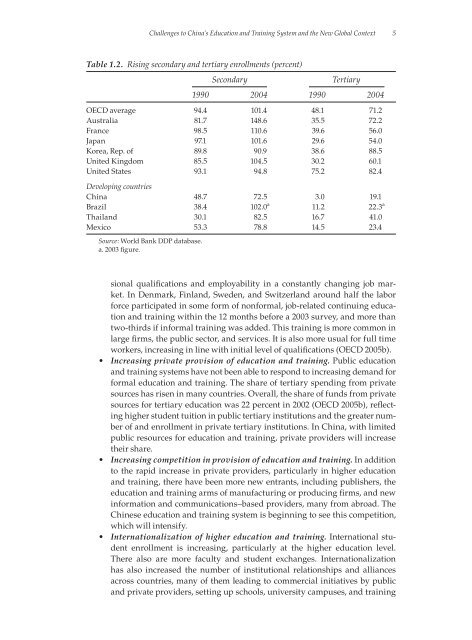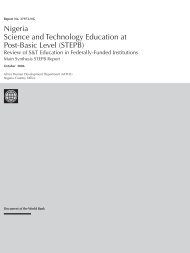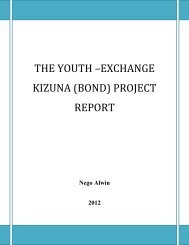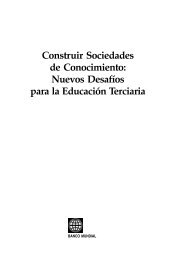Enhancing China's Competitiveness Through Lifelong Learning ...
Enhancing China's Competitiveness Through Lifelong Learning ...
Enhancing China's Competitiveness Through Lifelong Learning ...
Create successful ePaper yourself
Turn your PDF publications into a flip-book with our unique Google optimized e-Paper software.
Challenges to China’s Education and Training System and the New Global Context 5<br />
Table 1.2. Rising secondary and tertiary enrollments (percent)<br />
Secondary<br />
Tertiary<br />
1990 2004 1990 2004<br />
OECD average 94.4 101.4 48.1 71.2<br />
Australia 81.7 148.6 35.5 72.2<br />
France 98.5 110.6 39.6 56.0<br />
Japan 97.1 101.6 29.6 54.0<br />
Korea, Rep. of 89.8 90.9 38.6 88.5<br />
United Kingdom 85.5 104.5 30.2 60.1<br />
United States 93.1 94.8 75.2 82.4<br />
Developing countries<br />
China 48.7 72.5 3.0 19.1<br />
Brazil 38.4 102.0 a 11.2 22.3 a<br />
Thailand 30.1 82.5 16.7 41.0<br />
Mexico 53.3 78.8 14.5 23.4<br />
Source: World Bank DDP database.<br />
a. 2003 figure.<br />
sional qualifications and employability in a constantly changing job market.<br />
In Denmark, Finland, Sweden, and Switzerland around half the labor<br />
force participated in some form of nonformal, job-related continuing education<br />
and training within the 12 months before a 2003 survey, and more than<br />
two-thirds if informal training was added. This training is more common in<br />
large firms, the public sector, and services. It is also more usual for full time<br />
workers, increasing in line with initial level of qualifications (OECD 2005b).<br />
• Increasing private provision of education and training. Public education<br />
and training systems have not been able to respond to increasing demand for<br />
formal education and training. The share of tertiary spending from private<br />
sources has risen in many countries. Overall, the share of funds from private<br />
sources for tertiary education was 22 percent in 2002 (OECD 2005b), reflecting<br />
higher student tuition in public tertiary institutions and the greater number<br />
of and enrollment in private tertiary institutions. In China, with limited<br />
public resources for education and training, private providers will increase<br />
their share.<br />
• Increasing competition in provision of education and training. In addition<br />
to the rapid increase in private providers, particularly in higher education<br />
and training, there have been more new entrants, including publishers, the<br />
education and training arms of manufacturing or producing firms, and new<br />
information and communications–based providers, many from abroad. The<br />
Chinese education and training system is beginning to see this competition,<br />
which will intensify.<br />
• Internationalization of higher education and training. International student<br />
enrollment is increasing, particularly at the higher education level.<br />
There also are more faculty and student exchanges. Internationalization<br />
has also increased the number of institutional relationships and alliances<br />
across countries, many of them leading to commercial initiatives by public<br />
and private providers, setting up schools, university campuses, and training
















